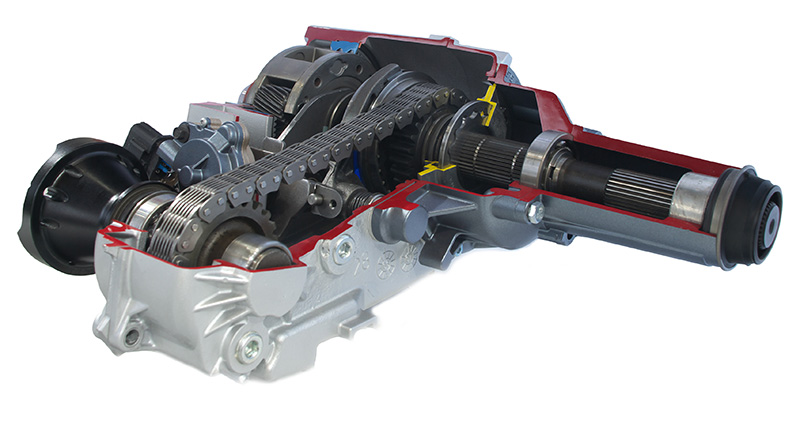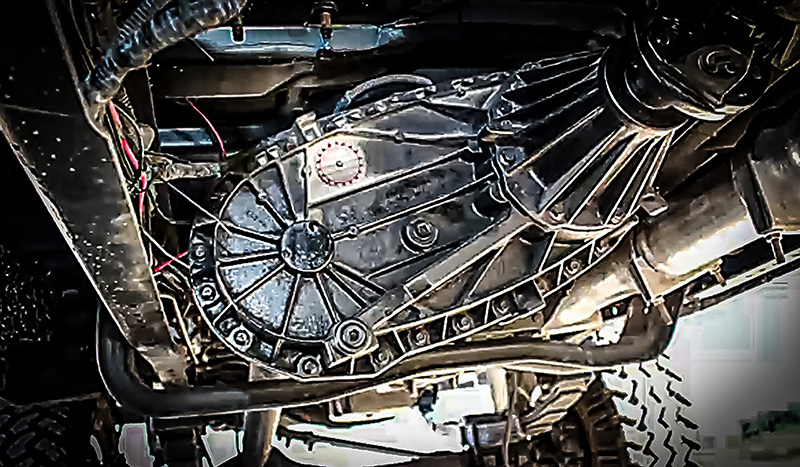Using your shop’s Cost of Doing Business (CODB) as a baseline for labor rates.

If your daily commuter doesn’t have 4WD, the first step to understanding it is knowing how to put it into play.
In this article, we’ll be referring to the conventional part-time 4WD layout, which is RWD most of the time and 4WD when asked. Note this is not the same as AWD, which is a much broader term with many different implementations. Drivers with the part-time systems this article deals with will engage them in two steps.
The first is by first locking the hubs. Today, this is usually done automatically by way of electric actuators or vacuum, but older vehicles sometimes required drivers to exit the cab and manually engage the hubs at each front wheel.
Next, some heavier-duty and no-frills work models (and those older models we mentioned) sometimes require a second step: engagement via a lever near the transmission tunnel.
On many newer vehicles, though, both steps just require the flick of the 4WD switch. Sometimes this can be done at speed (“shift-on-the-fly”), but usually it’s best done at low speed or stopped.
Usually drivers can select between high and low gears. In high gear, the t-case will direct power fore and aft with no change in gearing from normal 2WD operation. In low gear, however, a set of reduction gears is employed that reduce the gearing of the whole vehicle separately from the gears in the transmission and differentials. Long story made short: in four low, most users are working at single-digit speeds—but the vehicle usually feels like it could climb a wall.

The transfer case in these vehicles is the item that takes power from the transmission and sends it to the front axle—it transfers it, hence the name. In the classic part-time layout, the case usually contains some shafts, gears, a chain, and an actuator and fork, and a lubricant to keep everything happy. They come in two main styles: married and divorced. While the differences between them aren’t important to most drivers, it can help to know at the counter what type you’re dealing with because married cases can have higher cost associated with their service and replacement—and they’re the dominant style found today.

Difficulty engaging or disengaging 4WD: This is a common one. There might be some mechanical, electrical, or vacuum actuation issues to examine, but it’s also important to know how this system functions.
Note that after selecting 4WD, the vehicle’s ECU can want to “see” deceleration below a certain speed before engaging to prevent damage. This is especially true of drivers in later-model vehicles who like to engage 4WD when moving at anything faster than parking-lot speeds.
Make sure your customer is familiar with operation of these systems. Almost all vehicles will respond well to coming to a stop, engaging 4WD, and then rolling both forward and backward a short distance at very low speed to allow the hubs to lock in. Many drivers simply aren’t aware that this is the sequence, so sometimes a quick ride-along can be beneficial for service writer and customer.
Slipping out of 4WD: This is also common and is often attributable to hubs that aren’t locked in fully or are worn to the point where they can no longer remain locked. When that’s the culprit, loud grinding noises are often a complaint traveling with this one.
Fluid leaks: They’re easy to diagnose, but hard on the transfer case. Lack of lubricant is a t-case killer. No transfer case will survive regular use under low-lube conditions.
Unusual noises like growling or humming: Also on the list of common complaints, lower-key noises than the outright grinding mentioned before can indicate wear or vibration issues. However, as in 2WD vehicles, noise can also be generated by the tires. It’s important to assess the tires before moving to the driveline, especially since vehicles with 4WD often are shod with big, heavy tires featuring tread blocks with many open voids that make oodles of disconcerting noises.
Make sure to check that the tires are matched, as well—tires of different brands (or tires replaced at different intervals) can reflect significant size differences which operate normally when the hubs are not locked, but create strange harmonics when power is sent through them.
Binding or strange steering behavior: On the loose and slick surfaces 4WD is designed for, tire slip during operation keeps things feeling pretty normal. However, on dry pavement, sharp lock-to-lock turns cause binding—and the system is designed to work that way. It’s very stressful on a lot of the components and most owners’ manuals mention as much. Make sure your customer knows that this is how the system functions and that low speed, tight maneuvers will accentuate driveline losses.

If you have customers with these specialized vehicles (or fleets of them since they tend to be heavier pickup trucks doing hard work where paved roads may not exist), the best thing you can do to prolong the lives of these parts is to recommend regular fluid level checks and exchanges to your customers. You can also recommend sticking a finger in the fill hole (to check the level) to your technicians if they don’t naturally do so.
Why? Transfer cases have vents. So natural temperature fluctuations in ambient air and especially the occasional traverse into water these capable vehicles often undergo can introduce water into the lubricant. And since your tech is often the only person with eyes under the vehicle, fluid level checks are both essential and a great way to see if the lubricant has the tell-tale milky appearance that means it’s contaminated with water.
T-cases are oft-forgotten items doing hard work and when given a modicum of proper care, they are almost universally rugged parts that survive rough treatment. They’re a natural “while we’re down there” item with services like transmission and differential fluid exchanges. And when the chips are down and the terrain is tough, your customers will appreciate getting the job done and getting back home without fanfare.
The articles and other content contained on this site may contain links to third party websites. By clicking them, you consent to Dorman’s Website Use Agreement.
Participation in this forum is subject to Dorman’s Website Terms & Conditions. Please read our Comment Policy before commenting.